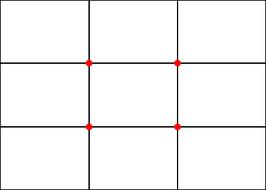Wicked Truth Post Test
The 'Wicked Truth Post Test' assesses knowledge in cinematography, focusing on camera shots, movements, and composition rules. It's designed to test and enhance understanding of fundamental filming techniques, beneficial for learners in film and media production.

- 2.
The "frame" refers to the rectangle captured by the camera, or an individual still image that makes up part of a video clip.
-
True
-
False
Correct Answer
A. TrueExplanation
The explanation for the given correct answer is that in the context of cameras and videos, the term "frame" refers to either the rectangle captured by the camera or an individual still image that is a part of a video clip. This means that when a camera captures a video, it does so by capturing a series of frames, which are essentially individual images that when played together create the illusion of motion. Therefore, the statement "The 'frame' refers to the rectangle captured by the camera, or an individual still image that makes up part of a video clip" is true.Rate this question:
-
- 3.
The term 'tilt' refers to camera movement on the _____________ axis.
Correct Answer
vertical
up and downExplanation
The term 'tilt' refers to camera movement on the vertical axis, specifically moving the camera up and down.Rate this question:
- 4.
The shot shown below is a _________ shot.
Correct Answer
POV
point of view
point-of-view
povExplanation
The shot shown below is a point of view (POV) shot. This shot is typically used to give the audience the perspective of a specific character, allowing them to see what the character sees. It helps to create a sense of immersion and can be used to convey the character's emotions or reactions to a situation.Rate this question:
- 5.
The technique shown in the video above is known as ___________________ .
Correct Answer
rack focus
contra focus
contra zoomExplanation
The technique shown in the video above is known as rack focus or contra focus or contra zoom. This technique involves changing the focus from one subject to another in the same shot, creating a visual effect that draws attention to the new subject. It is commonly used in filmmaking to shift the viewer's focus and emphasize different elements within a scene.Rate this question:
- 6.
The image shown above corresponds to what rule of composition?
-
The 180 degree rule
-
The rule of thirds
-
The 30 degree rule
-
The grid rule
Correct Answer
A. The rule of thirdsExplanation
The image shown above corresponds to the rule of thirds. This rule suggests dividing the image into nine equal parts by two equally spaced horizontal lines and two equally spaced vertical lines. The main subject or points of interest should be placed along these lines or at their intersections, creating a more balanced and visually appealing composition.Rate this question:
-
- 7.
B-roll footage includes interviews and is the primary footage in a documentary.
-
True
-
False
Correct Answer
A. FalseExplanation
B-roll footage is not the primary footage in a documentary. B-roll footage is supplementary footage that is used to enhance or support the main footage or interviews in a documentary. It is typically used to provide visual context, show different angles or perspectives, or cover transitions between scenes. The primary footage in a documentary would typically consist of interviews, scenes, or events that are central to the subject matter being explored. Therefore, the correct answer is False.Rate this question:
-
- 8.
The following terms are all audio terms relating to film (check all that apply)
-
Foley
-
Scrimshaw
-
Wah-Wah
-
Be-bop
-
Final Cut
-
Voice of God
-
Room Tone
-
Hee-haw
Correct Answer(s)
A. Foley
A. Wah-Wah
A. Voice of God
A. Room ToneExplanation
The correct answer is Foley, Wah-Wah, Voice of God, and Room Tone. These terms are commonly used in the audio production of films. Foley refers to the reproduction of everyday sound effects to enhance the audio in a film. Wah-Wah is a sound effect created using a guitar pedal that produces a vibrating, "wah" sound. Voice of God is a term used to describe a disembodied voice that is used for narration or announcements in a film. Room Tone refers to the ambient sound in a room or location, which is recorded to provide consistency in the audio during editing and post-production.Rate this question:
-
- 9.
Cross-fade is an editing term.
-
True
-
False
Correct Answer
A. TrueExplanation
Cross-fade is indeed an editing term used in various forms of media production, such as film, music, and video editing. It refers to a transition effect where one image or sound gradually fades out while another simultaneously fades in, creating a smooth and seamless transition between the two. This technique is commonly used to enhance the visual or auditory flow between different scenes or segments.Rate this question:
-
- 10.
Which of the following terms does not relate to pre-production?
-
Script
-
Sequence
-
Shot List
-
Storyboard
Correct Answer
A. SequenceExplanation
Pre-production refers to the planning and preparation phase before the actual production of a film or video. During pre-production, various tasks are completed such as writing the script, creating a shot list, and developing storyboards. These tasks help in organizing and visualizing the scenes and shots that will be filmed. However, "sequence" does not directly relate to pre-production. A sequence refers to a series of related scenes that form a distinct narrative unit within a film. While sequences are planned and organized during pre-production, the term itself does not specifically belong to the pre-production phase.Rate this question:
-
Quiz Review Timeline (Updated): Mar 19, 2023 +
Our quizzes are rigorously reviewed, monitored and continuously updated by our expert board to maintain accuracy, relevance, and timeliness.
-
Current Version
-
Mar 19, 2023Quiz Edited by
ProProfs Editorial Team -
Apr 29, 2011Quiz Created by
Mrmeher
 Back to top
Back to top





